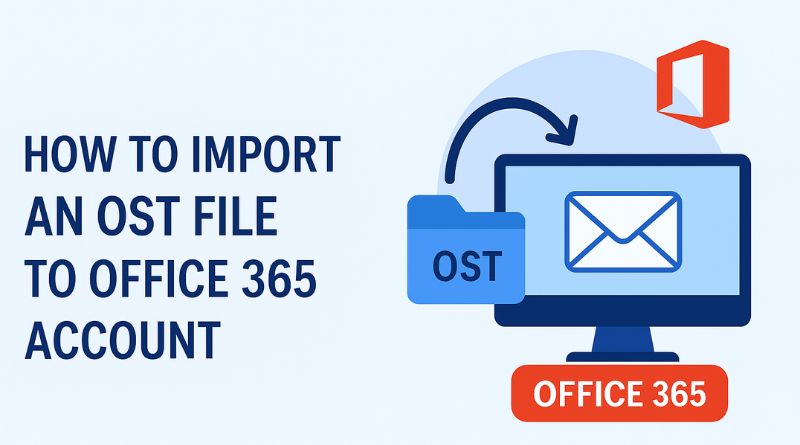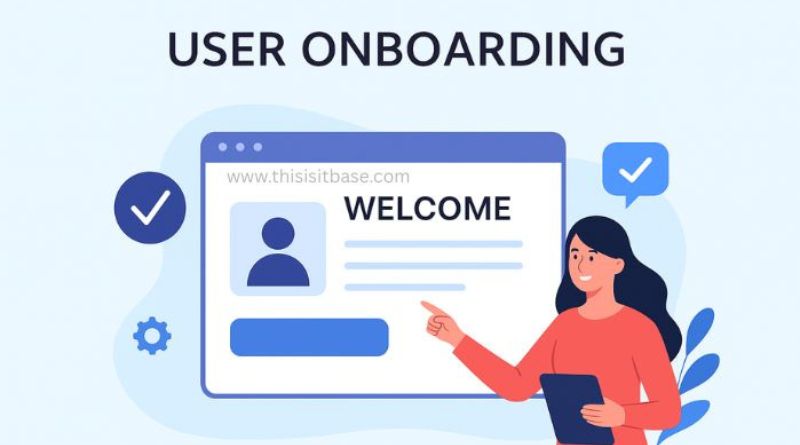Why Tax Buddy is the Smart Way to File Your Taxes

Filing taxes can feel like solving a giant puzzle. Between forms, deadlines, and confusing terms. That’s exactly why Tax Buddy has become my go-to choice. It makes tax filing not only easier but also smarter. Let’s explore why Tax Buddy is the smart way to file your taxes. Simplifying the Tax Filing Process When I first heard about Tax Buddy, I was skeptical. But after trying it, I realized how simple the process could be. You just upload your documents, answer a few questions, and let the platform handle the rest. No more worrying about missing forms or making calculation errors. The interface is friendly and clear. Even if you’re not tech-savvy, you’ll figure it out in minutes. That’s one big reason why Tax Buddy is the smart way to file your taxes—it removes unnecessary stress. Expert Assistance at Your Fingertips Here’s the thing: most of us aren’t tax experts. I once tried filing my taxes on my own and ended up overpaying because I missed deductions. With Tax Buddy, you get access to real professionals who know the tax rules inside out. They review your details, spot savings, and ensure everything is compliant. If you have questions, they respond quickly. This level of support is why Tax Buddy beats traditional DIY methods. Affordable and Transparent Pricing A lot of tax services either overcharge or hide extra fees until the end. Tax Buddy’s pricing is upfront and easy to understand. Here’s a quick comparison of how it stacks up: Service Price Range Expert Review Ease of Use Hidden Fees Tax Buddy ₹499–₹1,999 Yes High No Generic Tax App ₹0–₹2,500 No Medium Yes Offline CA ₹1,500–₹5,000 Yes Low Varies This transparency is yet another reason why Tax Buddy is the smart way to file your taxes—it values your time and money. Time-Saving and Convenient We’re all busy. Spending hours figuring out tax forms is not on anyone’s wish list. Tax Buddy lets you upload documents from your phone or laptop and complete filing in minutes. You can track progress in real time. No more waiting weeks for updates. It’s this convenience that keeps me coming back year after year. Secure and Reliable When it comes to taxes, security is non-negotiable. Taxes Buddy uses encryption and secure servers to protect your data. I’ve been using it for two years and never had an issue. Knowing my personal and financial information is safe makes me trust the platform even more. That trust is a big factor in why Tax Buddy is the smart way to file your taxes. Perfect for First-Timers and Busy Professionals Whether you’re filing for the first time or have years of returns under your belt, Taxes Buddy adapts to you. It guides beginners step-by-step and offers advanced features for experienced users. As someone who used to dread tax season, I now find it surprisingly manageable. That’s not something I thought I’d ever say. Final Thoughts Taxes don’t have to be a headache. With expert guidance, transparent pricing, and easy-to-use tools, Taxes Buddy turns a stressful chore into a smooth experience. So, if you’re tired of confusing forms, last-minute rushes, and paying more than you should, give Taxes Buddy a try. You might just agree that Tax Buddy is the smart way to file your taxes—and wonder why you didn’t start sooner.
How to Import an OST File to Office 365 Account

Moving an OST file to Office 365 account may sound tricky. But with the right approach, it becomes simple. Whether you are changing jobs, upgrading systems, or just backing up your data, this process is worth learning. Why You Might Need to Move OST Files An OST file stores your Outlook data locally. It’s great for offline work. However, issues arise when you want to access this data on a new machine or directly in Office 365.I once switched laptops at work, and my IT team had to figure out how to get my old OST data into my new Office 365 account. It wasn’t hard, but knowing the steps saved us hours. Preparing for the Transfer Before moving your OST file to Office 365 account, check these: Make sure you have Outlook installed. Keep a backup of your OST file. Ensure stable internet for syncing. Trust me, skipping the backup can cause headaches later. Methods to Import OST File to Office 365 Account 1. Using Outlook Import/Export Feature This is the simplest method for many users. Open Outlook with your old profile. Go to File → Open & Export → Import/Export. Select “Export to a file” and choose PST format. Save the file. Sign in to your Office 365 account in Outlook. Import the PST file. Note: You can’t import OST directly. First, convert it to PST. 2. Using a Third-Party Tool Some tools can convert OST to PST or import directly to an Office 365 account. Tool Name Price Range Ease of Use Customer Rating Stellar Converter $79+ Easy 4.5/5 Kernel OST to PST $69+ Moderate 4.4/5 SysTools Migrator $99+ Easy 4.3/5 I once tried Stellar Converter for a bulk migration. It was worth the money because it saved time. 3. Manual Method via New Profile Setup If you still have access to your Exchange server: Create a new Outlook profile connected to Office 365. Open the old profile alongside the new one. Drag and drop emails, contacts, and calendar items. This works well for smaller mailboxes. For huge OST files, it’s time-consuming. Tips for a Smooth Migration Check mailbox size before starting. Large files take longer. Organize folders so you don’t end up with a mess in Office 365. Test the migration with a small folder first. Common Issues and Fixes Problem: OST file won’t open.Fix: Use an OST viewer tool to confirm file integrity. Problem: Migration is too slow.Fix: Run the process during off-peak hours. Problem: Missing attachments.Fix: Ensure your export settings include attachments. Final Thoughts Moving an OST file to Office 365 account doesn’t have to be stressful. Break it into steps. Start with a backup, choose your method, and follow through.From personal experience, I can say that using a tool is faster for big files. But if you’re okay with manual work, Outlook’s built-in options are fine too. If you’ve ever done this migration, you know how satisfying it feels to see all your old emails, contacts, and calendars neatly in Office 365. It’s like unpacking in a new home but finding everything in the right place.
User Onboarding on how to Guide for Smooth Customer Journeys

What is User Onboarding? User Onboarding is the process of guiding new users to understand and start using your product or service effectively. Think of it like welcoming a friend to your home — you wouldn’t just let them in and walk away. You’d show them around, explain where things are, and make them feel comfortable. That’s exactly what good onboarding does for your users. It’s not just about showing features. It’s about helping users see value quickly so they stay longer. Why User Onboarding Matters I once signed up for a great-looking app but deleted it within a day. Why? No clear guidance. I had to figure out everything myself. That frustration is what we must avoid. A solid User Onboarding process ensures: Faster product adoption Reduced churn rate Higher customer satisfaction Increased lifetime value With competition so high, onboarding can be the difference between a loyal customer and a lost opportunity. Key Stages of User Onboarding 1. First Impression The first login sets the tone. Greet users with a friendly message. Show them you’re happy they joined. A small welcome pop-up can make a big difference. 2. Guided Tour Don’t dump all features at once. Instead, offer step-by-step walkthroughs. People like learning in small chunks. 3. Interactive Help Tooltips, videos, and live chat support make onboarding interactive. Users feel supported without feeling overwhelmed. 4. First Success Moment Help them achieve something meaningful early. If you’re a task management app, get them to create their first task within minutes. That “aha” moment builds trust. Common Mistakes in User Onboarding Mistake Why It Hurts How to Fix Too much info at once Overwhelms users Spread tips across sessions No personalization Feels generic Tailor onboarding to user needs Long sign-up forms Frustrates users Ask only essential info No follow-up Users forget Send helpful reminder emails Best Practices for Effective User Onboarding Keep It Simple Avoid jargon. Speak like you’re talking to a friend over coffee. Use Progress Indicators When users see a “3 of 5 steps completed” bar, they’re motivated to finish. Offer Skip Options Not everyone needs guidance. Let experienced users skip tutorials. Follow Up Send friendly emails with tips, success stories, and next steps. Real-Life Example When I joined a budgeting app recently, it asked me to connect my bank account first. Then it showed my spending trends instantly. That quick win hooked me. I kept using the app because I saw real value right away. This is what good User Onboarding does — it helps users experience value fast. Final Thoughts User Onboarding isn’t a one-time thing. It’s an ongoing relationship. From the first login to daily usage, every interaction matters. When done right, onboarding turns curious visitors into loyal customers. Think of it this way — you’re not just teaching someone to use a tool. You’re making them feel at home. And when people feel at home, they stick around.
What is Whitelisting : A Simple Guide

Have you ever tried logging into a service, and it just works because your device is already “approved”? That’s the idea behind whitelisting. Let’s break it down, keep it human, and make sure you know how it works in real life. What is Whitelisting? In simple terms, whitelisting means creating a list of trusted entities. These could be email addresses, IP addresses, apps, or websites. If you’re on the list, you’re in. If not, you’re blocked. Think of it as a VIP guest list at a club — only approved people get past the door. Why Whitelisting Matters We live in a world full of online threats. Hackers, scammers, spam — they’re everywhere. Whitelisting is a way to filter out the noise. It’s not about being paranoid. It’s about staying safe. I first used it when managing my work email. Spam filters weren’t enough. Adding my client’s emails to a whitelist meant I never missed their messages. Types of Whitelisting There’s no one-size-fits-all. Here are the most common types: Email Whitelisting’s – Ensures messages from trusted senders land in your inbox, not spam. IP Whitelisting – Grants access to a network only if the IP address matches the approved list. Application Whitelisting – Lets only verified apps run on your device. Website Whitelisting – Blocks all sites except those on the approved list. How Whitelisting’s Works It’s simpler than it sounds. You define what is “safe.” The system checks every incoming request against your approved list. If it matches, it passes. If not, it gets denied. Example: At my old job, we used IP whitelisting for remote access. Only company devices with approved IP addresses could log in. It saved us from multiple hacking attempts. Benefits of Whitelisting Better Security – Stops unverified connections before they start. Less Spam – Your inbox gets cleaner. More Control – You decide who or what gets in. Peace of Mind – Fewer chances of malicious attacks. Downsides to Consider Whitelisting’s isn’t perfect. If you forget to add someone important, their email or request gets blocked. It also requires regular updates. Outdated lists can slow down work or cause frustration. Whitelisting’s vs. Blacklisting Feature Whitelisting Blacklisting Approach Only allow approved items Block known bad items Security Level Higher (more restrictive) Lower (less restrictive) Maintenance Needs constant updates Needs updates for new threats Risk May block good entities by mistake May allow new threats until detected How to Start Whitelisting Identify what needs protection — email, apps, networks. Create your list of trusted entities. Set up rules in your software or firewall. Test to ensure no important connections are blocked. Review and update the list regularly. My Take on Whitelisting Honestly, I’ve come to love whitelisting’s. Sure, it’s a little strict, but the security boost is worth it. It’s like having a personal bouncer for your digital life. And in today’s online world, that’s priceless. Final Thoughts So, what is whitelisting? It’s a proactive security method that only allows approved connections. It’s strict but effective. Whether it’s for your email, network, or apps, whitelisting’s can save you from headaches — and from hackers. If you want more control over your online safety, it’s time to give it a try.
Will AI Replace Full Stack Developers or Create New Roles?

The tech world is buzzing with this question — will AI replace full stack developers? If you’ve worked in software, you’ve probably heard mixed opinions. Some believe AI is ready to take over. Others say humans will always be needed. Let’s break it down in simple terms. The Rise of AI in Development Over the past few years, AI tools have exploded. Platforms like GitHub Copilot, ChatGPT, and Tabnine help write code faster. They suggest solutions, fix bugs, and even build simple applications. But does this mean AI can fully replace full stack developers? Not yet. AI still depends on human input. It can’t think about business goals the way we do. It also struggles with unique, complex problems. Why Developers Still Matter Think about a project where the client keeps changing requirements. A human developer can adapt, ask the right questions, and balance the design with the back-end logic. AI, on the other hand, will just follow the instructions it’s given. From my own experience, working on a multi-module app, no AI could match the problem-solving skills of my team. We had to integrate third-party APIs, manage security concerns, and optimize for speed — all while keeping the UI clean. AI gave us suggestions, but it didn’t make decisions. AI as a Co-Pilot, Not a Replacement Right now, AI is like that super-fast colleague who knows a lot of code snippets. You tell it what you need, and it delivers in seconds. But if you ask it to lead a full project? That’s where human full stack developers shine. AI is amazing for: · Auto-generating boilerplate code · Speeding up testing · Debugging repetitive issues · Creating quick prototypes However, it struggles with: · Understanding vague requirements · Making architectural decisions · Managing stakeholders · Innovating beyond existing patterns The Future: Collaboration Over Replacement Rather than thinking AI replace full stack developers, it’s smarter to see this as a partnership. AI handles the repetitive coding tasks. Developers focus on creativity, architecture, and problem-solving. This is similar to how calculators didn’t replace mathematicians — they just made their work faster and more accurate. Skills Developers Should Learn Now If you’re a full stack developer, here’s how to future-proof yourself: Learn AI integration — Know how to use AI tools in your workflow. Focus on problem-solving — Logic and creativity will always be valuable. Master soft skills — Communication, teamwork, and adaptability are key. Keep updating your tech stack — New frameworks and languages emerge every year. Quick Comparison: AI Tools vs Full Stack Developers Feature AI Tools Full Stack Developers Speed of simple coding Very fast Fast, but slower than AI Complex problem-solving Limited Strong Communication with clients None Excellent Creativity & innovation Low High Cost for small tasks Low Medium to high My Final Take So, will AI replace full stack developers completely? I don’t think so. At least not in the next decade. AI will evolve, but human developers bring something AI can’t — empathy, judgment, and real-world experience. From my perspective, the smartest move is to embrace AI as a teammate. Learn how to work with it, not against it. That’s how you stay ahead.
